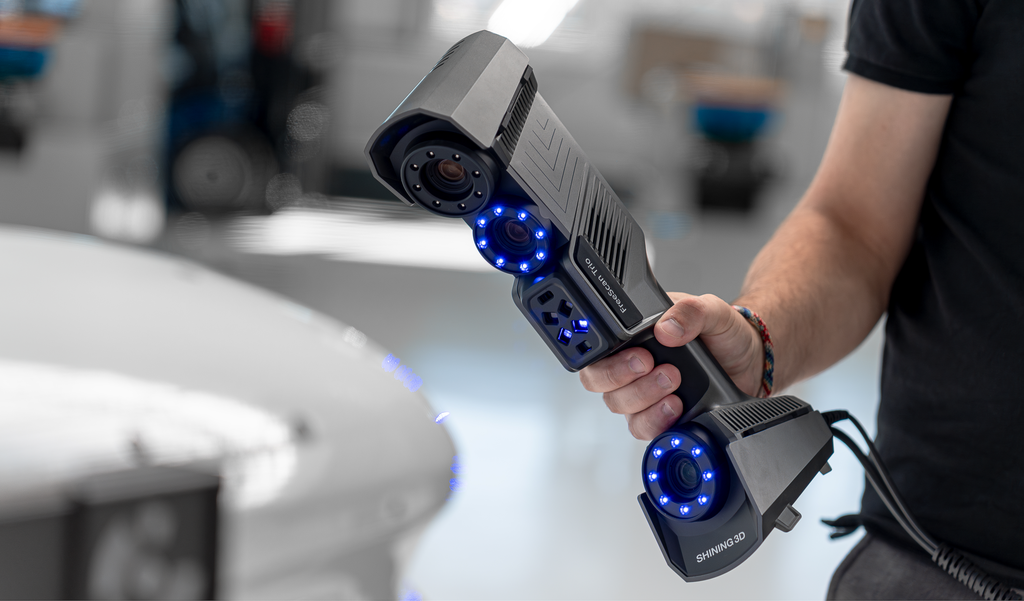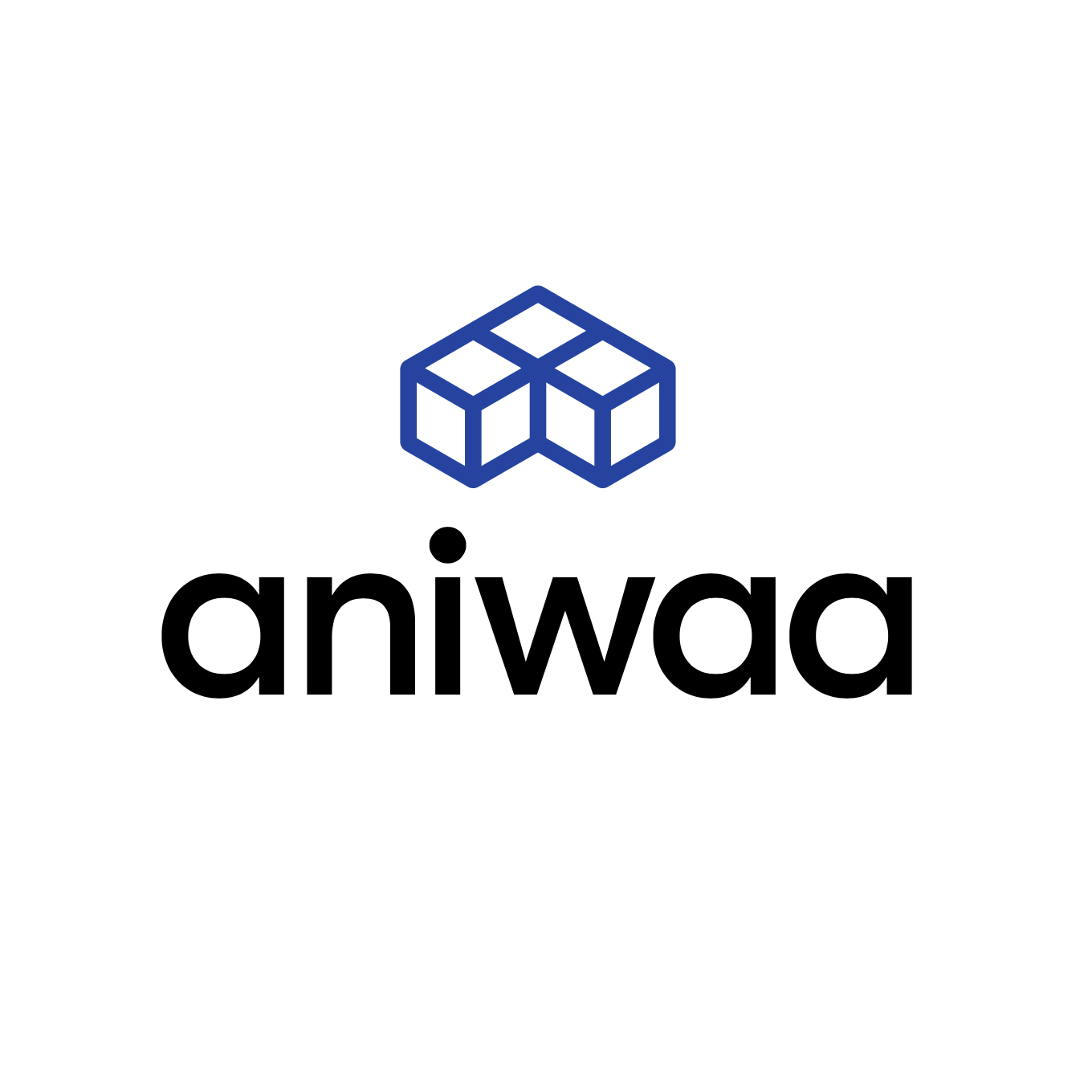A comprehensive comparison of Shining 3D’s 2024 metrology 3D scanners

Industrial metrology is an area of production that deals with dimensional conformity, particularly for quality assurance purposes. By precisely measuring parts and assemblies to make sure they match the original design, metrologists can ensure things will work how they are supposed to: bridges will stand for centuries, doors will fit into their door frames, and airplanes won’t fall out of the sky.
Many people associate industrial metrology with contact scanning technology such as the coordinate measuring machine (CMM), widely used for quality assurance. However, handheld laser scanners are becoming an equally valuable tool in this area — and with a surprisingly large range of uses. More accurate and reliable than ever, laser scanners can be used to scan massive objects such as vehicles, whether for part inspection, reverse engineering, maintenance, or other purposes.
A leading company in the development of metrology-grade laser scanners is Shining 3D. Known for its professional EinScan scanners, Shining 3D also offers a full range of industrial-grade metrology scanners under the FreeScan name, offering accuracy up to 0.02 mm for consistent scanning results. This guide looks at the four handheld FreeScan laser scanners available in 2024, providing a helpful comparison in terms of performance, applications, and budget.

Get to know the scanners
In addition to a number of desktop inspection systems, robotic scanners, and photogrammetry solutions for industrial metrology, Shining 3D specializes in the production of industrial-grade handheld laser scanners. These four scanners all use triangulation technology with blue lasers and high-resolution cameras, though each model has its own unique features and advantages.
FreeScan Trio
From $35K
Introduced in November 2023, the latest addition to the FreeScan range is the FreeScan Trio, so named due to its triple-camera design, which offers even greater power, precision, and versatility than the UE Pro. With the ability to capture 3.01 million points per second without the use of markers, the FreeScan Trio is the most advanced FreeScan model available and can therefore be used for a broad range of industrial applications.

Four scanning modes are possible with the FreeScan Trio, with its 98-line scanning mode setting it apart from the models listed above. This ultra-fast mode does not require markers to capture objects and can produce accurate scans of objects made from a range of materials.
Recommended for: Critical metrology applications requiring greatest possible precision and speed
FreeScan UE Pro
From $24K
Available since Summer 2022, the FreeScan UE Pro is a more powerful version of the UE with faster point capture (1.85 million points per second), greater control over scanning of large objects, and better capture of fine details. In general, the FreeScan UE Pro covers similar industrial applications as the UE but with the ability to capture even larger objects — boats and entire aircraft, for example. Its finer resolution also gives it the edge in high-stakes sectors like aerospace.

The FreeScan UE Pro can achieve good results thanks to its range of scanning modes. Possessing 26 laser lines (crosses) for fast scanning, 7 parallel lines for fine details, and a single line for holes and pockets, the UE Pro also offers a photogrammetry module for higher volumetric accuracy. Markers and scale bars can be used for photogrammetry scans.
Recommended for: Metrology applications with greater scale or resolution demands
FreeScan Combo
From $15K
The FreeScan Combo is a hybrid metrology scanner, combining blue laser scanning with VCSEL infrared scanning to open up greater scanning possibilities in inspection, reverse engineering, and 3D capture for additive manufacturing. The addition of an infrared light source provides the capability to capture data using feature alignment without markers.

Less expensive than the UE Pro described above, the FreeScan Combo has a lightweight body and a spritely acquisition speed of 1.86 million points per second, making it a good choice for buyers who need a quick, easy-to-use solution for a variety of situations. Shining 3D launched the FreeScan Combo in Spring 2023, making it one of the company’s newer products, and its low price point makes it a good alternative to the discontinued FreeScan UE7.
Recommended for: On-the-go, mixed-environment metrology scanning
FreeScan UE
Resale only
The FreeScan UE is the most basic model in the FreeScan range, though it still possesses the ability to handle serious industrial metrology tasks, with applications in automotive, aerospace, transport, energy, and mold inspection. Suitable buyers include savvy industrial users that require a genuine metrology-grade solution but do not wish to break the bank to get the highest possible resolution or hybrid scanning functions.
This product comes in two distinct versions, the FreeScan UE7 (14+1 laser lines) and the more expensive FreeScan UE11 (22+1 laser lines), with the latter able to capture 1.35 million points per second. The FreeScan UE was launched in 2021 and was recently discontinued, though it may still be available from third-party sellers.
Recommended for: All-round measurement, inspection, reverse engineering
What are metrology 3D scanners?
3D capture is a rapidly growing technology, with a large number of 3D scanners on the market. However, not all scanners are used for the same applications. Some models are directed at consumers for household tasks or recreational activities. Others are used by professionals for reverse engineering, archiving, or obtaining 3D models for 3D printing.
Perhaps the most important class of 3D scanners are those used for industrial metrology, an area of the production sector involved with the precise measurement of manufactured parts to ensure dimensional conformity with blueprints, assessing in-service parts for wear or warping, and more. These industrial-grade scanners are typically the most accurate scanners available, as they are used for critical tasks in which tight tolerances are specified.
While different scanning technologies can be used for industrial metrology, some of the more common types are laser triangulation and photogrammetry. LED or structured light scanning, while useful for many applications, is typically not used for tasks like inspection except in some specific scenarios.
Conclusion
In conclusion, Shining 3D’s lineup of metrology 3D scanners offers a wide range of options suited to various industrial needs, from basic measurements to metrology-grade inspection tasks, to high-precision scans of large-scale objects. Whether it’s the cost-effective FreeScan UE, the versatile FreeScan Combo, the powerful FreeScan UE Pro, or the cutting-edge FreeScan Trio, each scanner brings its own set of features and capabilities to the table.
 English
English  Français
Français

